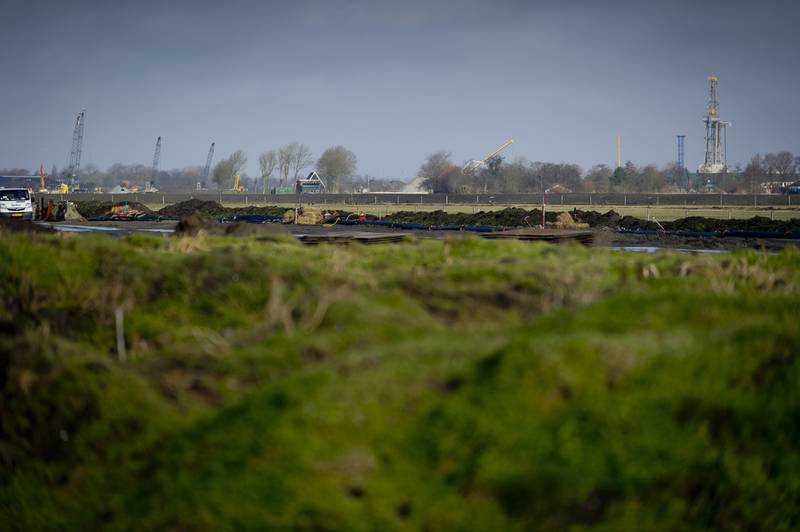Europe needs an energy policy free of other leading power blocs
04 October, 2021

In May 2019, the US Department of Energy wanted “molecules of US freedom to be exported to the world”, a Trump administration official said. Liquefied natural gas was part of the agenda of American “energy dominance”.
Last month, US energy envoy Amos Hochstein said that US LNG shipments to Europe were running at capacity and the gas crunch meant “people’s lives are at stake”.
With Europe facing the dual threat of Russia, which seems to be holding back gas, and China, which last week told its energy firms to secure winter fuel supplies “at all costs”, this rhetoric suggests the US would offer support in the face of two authoritarian rivals. The reality is very different.
The country’s LNG exports have risen sharply this year. Yet last month, the leading recipient of American LNG was China, with 17 per cent of the total. Other Asian countries mopped up 37 per cent. Latin America, suffering from low hydroelectric output because of drought, took 25 per cent, leaving Europe with the residue.
This is not surprising. Under the US’s free-market system, LNG goes to the highest bidder or where existing contracts dictate, not where diplomats might wish it.
The case of Russia is less clear. Gazprom, the monopoly pipeline exporter, has met its contractual commitments but not delivered additional gas, despite soaring prices. European storage sites run by Gazprom have remained near-empty, even while others have been filled as usual in expectation of winter. The gas major has concentrated on domestic storage to meet Russian demand.
Can Gazprom simply not produce more immediately, especially after a fire at a processing plant at the key Urengoy field in August? Is it running into pipeline bottlenecks in its home network? Is it maximising revenue by allowing prices to soar?
Or has the Kremlin taken a political decision not to send extra gas to pressure the EU into giving the final approvals for its Nord Stream II pipeline, which runs directly under the Baltic Sea to Germany to bypass Ukraine and Poland?
Another political worry is Algeria severing diplomatic relations with Morocco, which could stop the gas it flows to Spain transiting its Maghreb neighbour.
And a further, little-remarked driver of the crisis is the deliberate shutdown of the Netherlands’ Groningen field, the largest field in Europe and the mainstay of gas supply since 1963. It yielded almost 30 billion cubic metres in 2016, nearly a tenth of EU consumption, but because of production-related earth tremors, this will be cut to 3.9 billion cubic metres this year and stop entirely, except for emergencies, late next year.
This is not related to climate change but does vividly illustrate the danger of ceasing domestic fossil fuel output before the low-carbon replacements have caught up.
Europe’s need for gas imports will rise 10 per cent by 2025, to phase out coal and retire Germany’s and Belgium’s nuclear reactors.
The increasing take-up of battery cars and heat pumps for buildings will also increase electricity demand. Improved efficiency, especially in heating buildings, and more renewable generation will take longer to make a dent.
In the face of these contradictory trends, European gas policy seems to have hinged on three ideas: that Russia had ample gas production and transport capacity, that it would behave as a competitive supplier and not use its market power and that ample reasonably priced LNG would fill any gap.
Whether Germany should have encouraged Nord Stream II so strongly is one question. But having committed to it ... it was folly that US sanctions held pipeline completion hostage in the run-up to winter. The American side has shown that it can obstruct but not construct.
So Europe, including the UK, needs an energy policy that makes full use of interconnectivity, trade and free markets but is not dependent on any of the other leading power blocs.
First is the need to push ahead even faster with the renewable and energy efficiency programmes. These need greater diversity of geography and types of renewables and more interconnections. Batteries are helpful for a day or two, but too much reliance on north-west European offshore wind will fall foul of weeks-long dark, cold and still winter spells.
International links such as a proposed 10.5 gigawatt solar and wind project in Morocco, cabled up to Portugal, Spain, France and the UK, or the 1 gigawatt IceLink from Iceland’s geothermal and hydropower to the UK, might be future options.
Second is to rethink ideological opposition to nuclear and carbon capture in countries where that is a problem – notably Germany. If Germans do not want carbon dioxide safely stored under their offshore territory, their North Sea neighbours in Norway, the UK, Denmark and the Netherlands are willing.
That can keep a sustainable role for gas in the energy mix. It is probably too much to switch from demonising to encouraging European gas production. But more gas storage not under Gazprom’s thumb would help.
Thirdly, it is the need to create a market for hydrogen as a complement then replacement for gas and a way of storing energy. That will require governments, utilities and industries to commit to long-term purchases. Europe will generate hydrogen at home, but also import it as necessary from North Africa, the Arabian Gulf and other emerging suppliers.
And fourthly, to remember the dictum of the great economist Adam Smith, somewhat rephrased: “It is not from the benevolence of America, Russia or the Gulf that we expect our energy, but from their regard to their own interest.”
Source: www.thenationalnews.com
